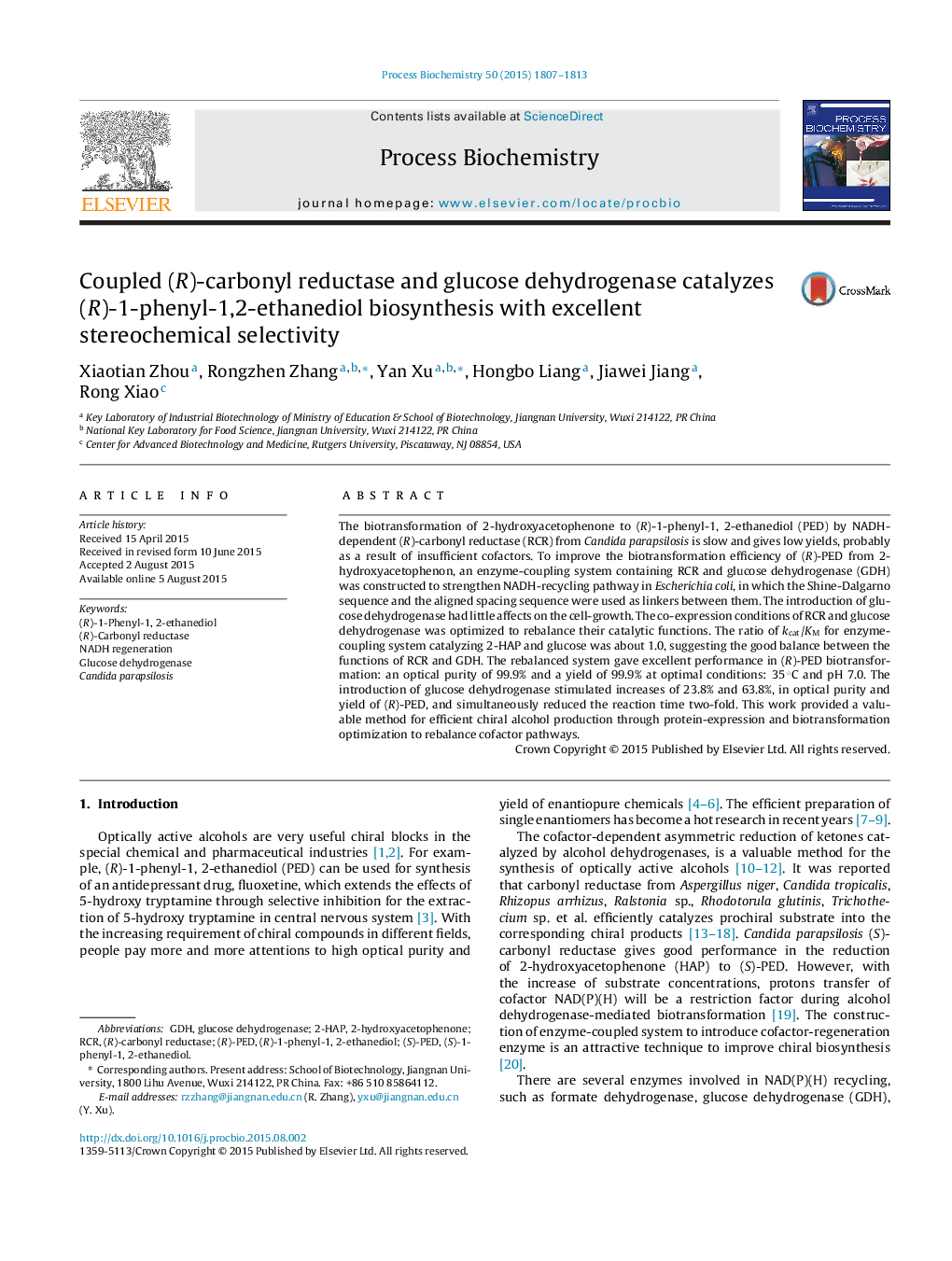| کد مقاله | کد نشریه | سال انتشار | مقاله انگلیسی | نسخه تمام متن |
|---|---|---|---|---|
| 34280 | 45016 | 2015 | 7 صفحه PDF | دانلود رایگان |

• The construction of coupling system contain RCR and GDH.
• The introduction of GDH has little effects on cell-growth.
• The functions of RCR and GDH were rebalanced through protein-expression optimization.
• The coupling system produced (R)-PED with excellent stereochemical selectivity.
The biotransformation of 2-hydroxyacetophenone to (R)-1-phenyl-1, 2-ethanediol (PED) by NADH-dependent (R)-carbonyl reductase (RCR) from Candida parapsilosis is slow and gives low yields, probably as a result of insufficient cofactors. To improve the biotransformation efficiency of (R)-PED from 2-hydroxyacetophenon, an enzyme-coupling system containing RCR and glucose dehydrogenase (GDH) was constructed to strengthen NADH-recycling pathway in Escherichia coli, in which the Shine-Dalgarno sequence and the aligned spacing sequence were used as linkers between them. The introduction of glucose dehydrogenase had little affects on the cell-growth. The co-expression conditions of RCR and glucose dehydrogenase was optimized to rebalance their catalytic functions. The ratio of kcat/KM for enzyme-coupling system catalyzing 2-HAP and glucose was about 1.0, suggesting the good balance between the functions of RCR and GDH. The rebalanced system gave excellent performance in (R)-PED biotransformation: an optical purity of 99.9% and a yield of 99.9% at optimal conditions: 35 °C and pH 7.0. The introduction of glucose dehydrogenase stimulated increases of 23.8% and 63.8%, in optical purity and yield of (R)-PED, and simultaneously reduced the reaction time two-fold. This work provided a valuable method for efficient chiral alcohol production through protein-expression and biotransformation optimization to rebalance cofactor pathways.
The coupled system based on RCR and GDH was rebalanced through protein-expression optimization. It gave excellent performance on (R)-PED biotransformation without exogenous cofactors.Figure optionsDownload as PowerPoint slide
Journal: Process Biochemistry - Volume 50, Issue 11, November 2015, Pages 1807–1813